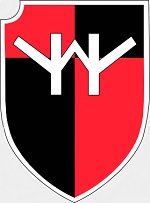Corgi AA38805 German Dornier Do 17Z-1 Light Bomber - Zerstorergeschwader 26 "Horst Wessel", Libya, Western Desert, 1941-'42 (1:72 Scale)
"Guns before butter. Guns will make us powerful; butter will only make us fat."
- Reichsmarschall Hermann Goering, Head of the German Luftwaffe
 The Dornier Do 17, sometimes referred to as the Fliegender Bleistift ("flying pencil"), was a World War II German light bomber produced by Claudius Dornier's company, Dornier Flugzeugwerke. It was designed as a Schnellbomber, a light bomber, which in theory, would be so fast that it could outrun defending fighter aircraft.
The Dornier Do 17, sometimes referred to as the Fliegender Bleistift ("flying pencil"), was a World War II German light bomber produced by Claudius Dornier's company, Dornier Flugzeugwerke. It was designed as a Schnellbomber, a light bomber, which in theory, would be so fast that it could outrun defending fighter aircraft.
The Dornier was equipped with two radial engines, mounted on a "shoulder wing" structure and possessed a Twin tail vertical stabilizer configuration. Designed in the early 1930s, it was one of the three main Luftwaffe bomber types used in the first three years of the war. The Do 17 made its combat debut in 1937 during the Spanish Civil War, operating in the Condor Legion in various roles. Along with the Heinkel He 111 it was the main bomber type of the German air arm in 1939-40. The type was popular among its crews due to its manoeuvrable handling at low altitude, which made the Dornier capable of surprise bombing attacks. Its sleek and thin airframe made it harder to hit than other German bombers, as it presented less of a target.
The Dornier was used throughout the war, and saw action in significant numbers in every major campaign theatre as a front-line aircraft until the end of 1941, when its effectiveness and usage was curtailed as its bomb load and range were limited. Production of the Dornier ended in the summer of 1940, in favour of the newer and more powerful Junkers Ju 88. The successor of the Do 17 was the Dornier Do 217, which started to appear in strength in 1942. Even so, the Do 17 continued service in the Luftwaffe in various roles until the end of the war, as a transport, test and trainer aircraft. A considerable number of surviving examples were sent to other Axis nations. A small production run of an updated version known as the Do 215 was also produced for export, but ended up in Luftwaffe service. Production of the Do 215 ceased in January 1941. Few of the Dornier Do 17s survived the war. The last was scrapped in Finland in 1952.
This 1:72 scale model represents a Dornier Do 17Z-1 Light Bomber of 'Horst Wessel', Zerstorergeschwader 26, then deployed to Libya, in the Western Desert, from 1941-'42.
Sold Out!
Dimensions:
Wingspan: 9-3/4-inches
Length: 8-3/4-inches
Release Date: November 2013
 Historical Account: "Horst Wessel" - Zerstorergeschwader 26 was formed in early 1936 from the Jagdgeschwader 134 "Horst Wessel". The Geschwaderstab and I. Gruppe was located in Dortmund, II. Gruppe in Werl and III. Gruppe in Lippstadt. The Geschwader was subordinated to Luftflotte 2. The Geschwader was re-equipped with the Messerschmitt Bf 110 shortly before the outbreak of World War II.
Historical Account: "Horst Wessel" - Zerstorergeschwader 26 was formed in early 1936 from the Jagdgeschwader 134 "Horst Wessel". The Geschwaderstab and I. Gruppe was located in Dortmund, II. Gruppe in Werl and III. Gruppe in Lippstadt. The Geschwader was subordinated to Luftflotte 2. The Geschwader was re-equipped with the Messerschmitt Bf 110 shortly before the outbreak of World War II.
Following the Battle of Britain, the three Gruppen of ZG 26 remained intact and were withdrawn to Germany to rest and re-equip in November and December 1940. Many of the Zerstorergeschwadern previously employed on day operations were now converted into the night fighter role for home defense. However, the proposed re-designation of I. and II./ZG 26 as I. and II./NJG 4 was suspended, and these two Gruppen formed part of the aerial support provided by the Luftwaffe for the forthcoming Balkans campaign.
VIII. Fliegerkorps assembled the attacking force, including ZG 26 for the offensive to begin on 6 April, I./ZG 26 escorting to bombers attacking Belgrade. Encountering Bf-109Es of the Yugoslavian Air Force, 2 enemy machines were claimed shot down, but the Zerstorer lost 5 in return. In the south, II./ZG 26 lost two Bf-110s while III./ZG 26 also claimed 2 Yugoslavian Air Force Bf-109s. The end of the first day broke the resistance of the Yugoslavian air force and the Zerstorers switched to attacking ground targets in support of the advancing German troops. On January 31st, III./ZG 26 became the first Luftwaffe unit to go to North Africa. The unit transferred to Castel Benito, Sirte, and Arco Philaenorum. A Bf-110 from the Gruppe which became the first German aircraft to be lost in North Africa when it forced-landed behind British lines on February 14th.


